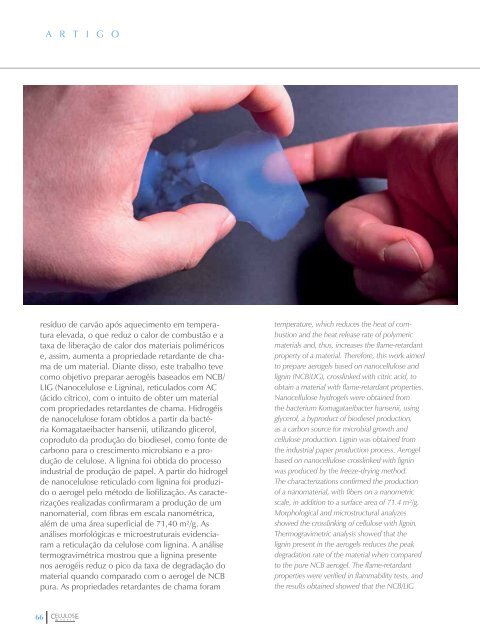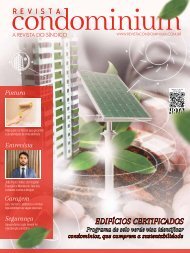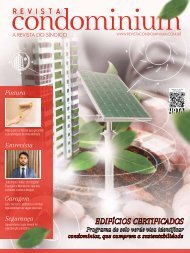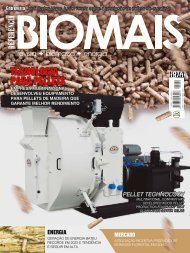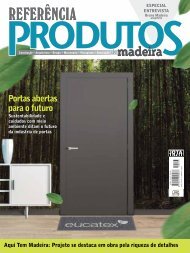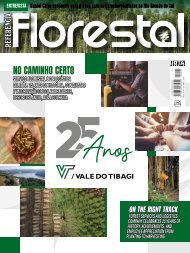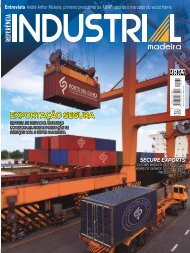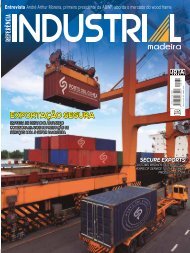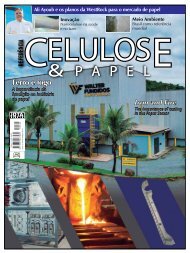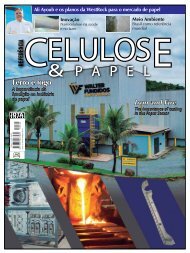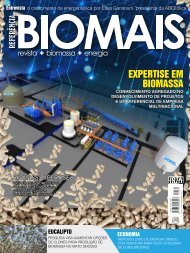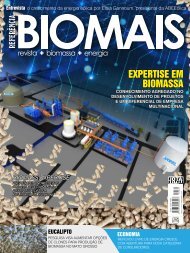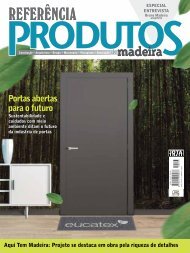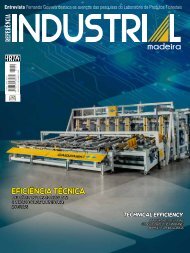You also want an ePaper? Increase the reach of your titles
YUMPU automatically turns print PDFs into web optimized ePapers that Google loves.
A R T I G O<br />
resíduo de carvão após aquecimento em temperatura<br />
elevada, o que reduz o calor de combustão e a<br />
taxa de liberação de calor dos materiais poliméricos<br />
e, assim, aumenta a propriedade retardante de chama<br />
de um material. Diante disso, este trabalho teve<br />
como objetivo preparar aerogéis baseados em NCB/<br />
LIG (Nanocelulose e Lignina), reticulados com AC<br />
(ácido cítrico), com o intuito de obter um material<br />
com propriedades retardantes de chama. Hidrogéis<br />
de nanocelulose foram obtidos a partir da bactéria<br />
Komagataeibacter hansenii, utilizando glicerol,<br />
coproduto da produção do biodiesel, como fonte de<br />
carbono para o crescimento microbiano e a produção<br />
de celulose. A lignina foi obtida do processo<br />
industrial de produção de papel. A partir do hidrogel<br />
de nanocelulose reticulado com lignina foi produzido<br />
o aerogel pelo método de liofilização. As caracterizações<br />
realizadas confirmaram a produção de um<br />
nanomaterial, com fibras em escala nanométrica,<br />
além de uma área superficial de 71,40 m²/g. As<br />
análises morfológicas e microestruturais evidenciaram<br />
a reticulação da celulose com lignina. A análise<br />
termogravimétrica mostrou que a lignina presente<br />
nos aerogéis reduz o pico da taxa de degradação do<br />
material quando comparado com o aerogel de NCB<br />
pura. As propriedades retardantes de chama foram<br />
temperature, which reduces the heat of combustion<br />
and the heat release rate of polymeric<br />
materials and, thus, increases the flame-retardant<br />
property of a material. Therefore, this work aimed<br />
to prepare aerogels based on nanocellulose and<br />
lignin (NCB/LIG), crosslinked with citric acid, to<br />
obtain a material with flame-retardant properties.<br />
Nanocellulose hydrogels were obtained from<br />
the bacterium Komagataeibacter hansenii, using<br />
glycerol, a byproduct of biodiesel production,<br />
as a carbon source for microbial growth and<br />
cellulose production. Lignin was obtained from<br />
the industrial paper production process. Aerogel<br />
based on nanocellulose crosslinked with lignin<br />
was produced by the freeze-drying method.<br />
The characterizations confirmed the production<br />
of a nanomaterial, with fibers on a nanometric<br />
scale, in addition to a surface area of 71.4 m²/g.<br />
Morphological and microstructural analyzes<br />
showed the crosslinking of cellulose with lignin.<br />
Thermogravimetric analysis showed that the<br />
lignin present in the aerogels reduces the peak<br />
degradation rate of the material when compared<br />
to the pure NCB aerogel. The flame-retardant<br />
properties were verified in flammability tests, and<br />
the results obtained showed that the NCB/LIG<br />
66


